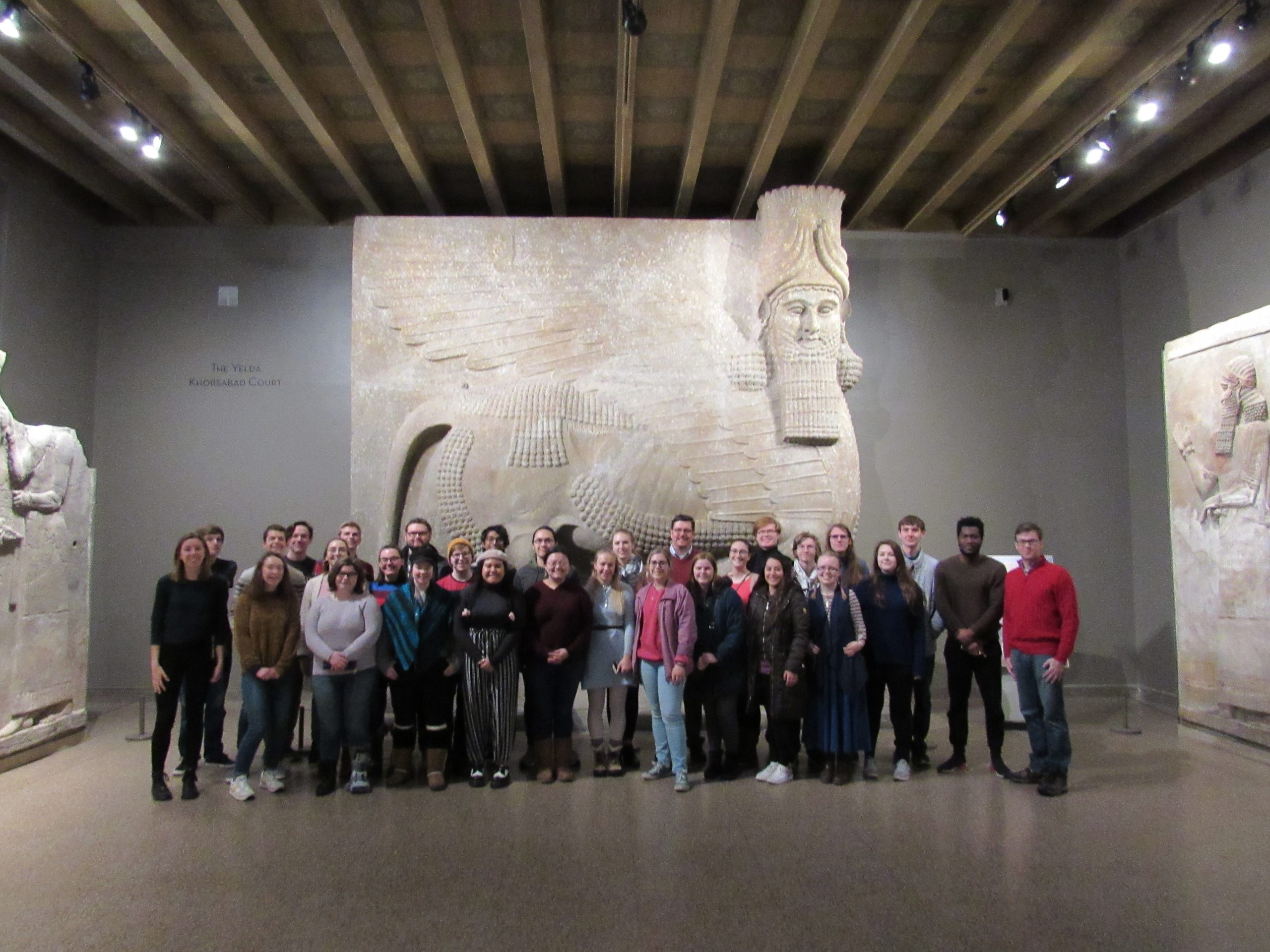This J-Term I offered a new course: Egypt and the Near East. The idea for this course came out of discussions we had in the Department of Classics about expanding our definition of ‘Classics’ chronologically and geographically to situate the Greeks and Romans in a broader historical context. The outdated notion that the Greeks were solely responsible for their own accomplishments in art, architecture, medicine, and science is not only wrong but simply ignores much of the ancient literature we study. It was a claim of authority to say one gained their knowledge from the great cultures of Egypt, Babylon, and the ‘East.’
We surveyed the history and cultures of Mesopotamia, Anatolia, and Egypt over the course of three weeks in preparation for the culmination of our study, a visit to the Oriental Institute Museum in Chicago. Students became experts on focused research topics such as ziggurats, Göbekli Tepe, the Law Code of Hammurabi, and the Napoleonic expedition to Egypt in 1798. They presented their research in class, on the bus, and in the museum. They provided detailed handouts, slide presentations, and scholarly bibliography.
Our class also considered the development of the field of archaeology from treasure hunters and antiquarians who did much of their work in the service of stocking European and American museums to modern scientific archaeologists with a deeper concern for cultural heritage and preservation. We attempted to experience life on these early excavations by reading Agatha Christie’s murder mysteries, Murder in Mesopotamia (1936) and Death on the Nile (1937). Christie had a lifelong passion for archaeology and met her husband Sir Max Mallowan, who excavated Nineveh and Nimrud, at the ancient site of Ur. The Oriental Institute Museum was built during this era and its ceiling was even decorated with motifs from Egyptian tomb paintings.
We were fortunate to have Dr. Blake Couey on our trip who lectured students on the prism of Sennacherib which details a siege of Jerusalem recounted in 2 Kings 18-19 and Isaiah 36-37. We also had an invited guest lecturer Sylvia Schweri speak to the students about the field of conservation. The trip was primarily successful because of our students who were attentive, enthusiastic, and represented Gustavus well. I was told we were always welcome to return to the Oriental Institute—a productive convergence of two distinguished institutions!
###
Will Bruce
Visiting Assistant Professor of Classics






Leave a Reply
You must be logged in to post a comment.